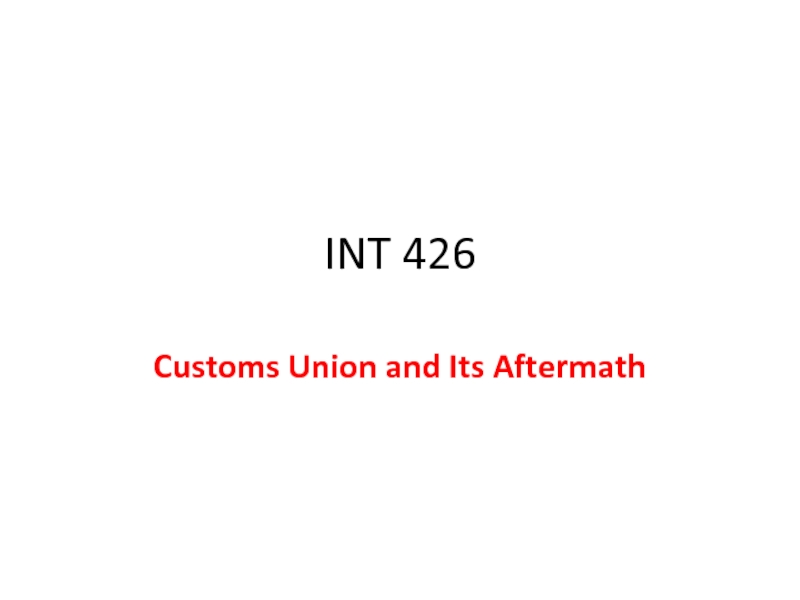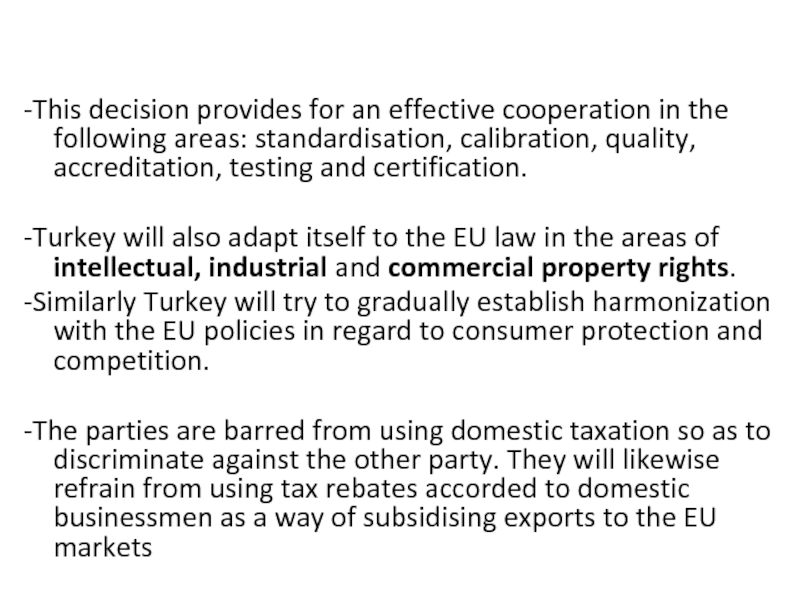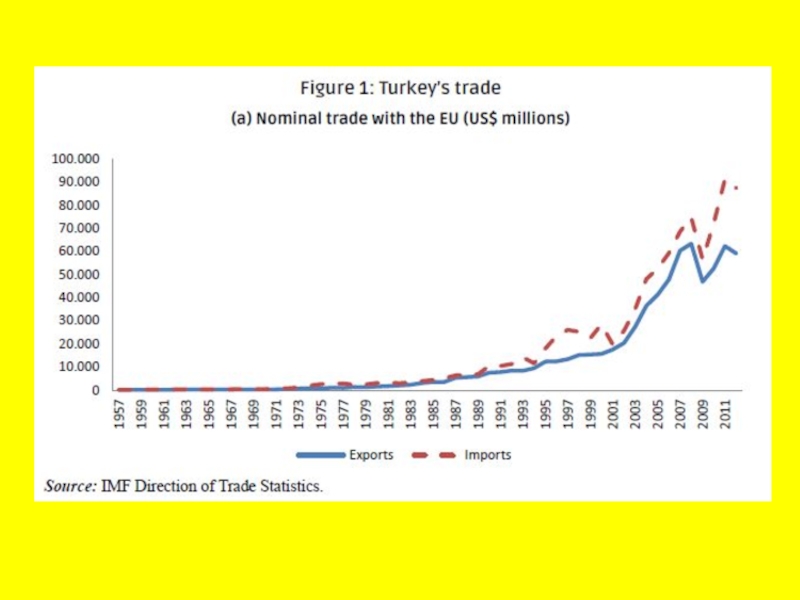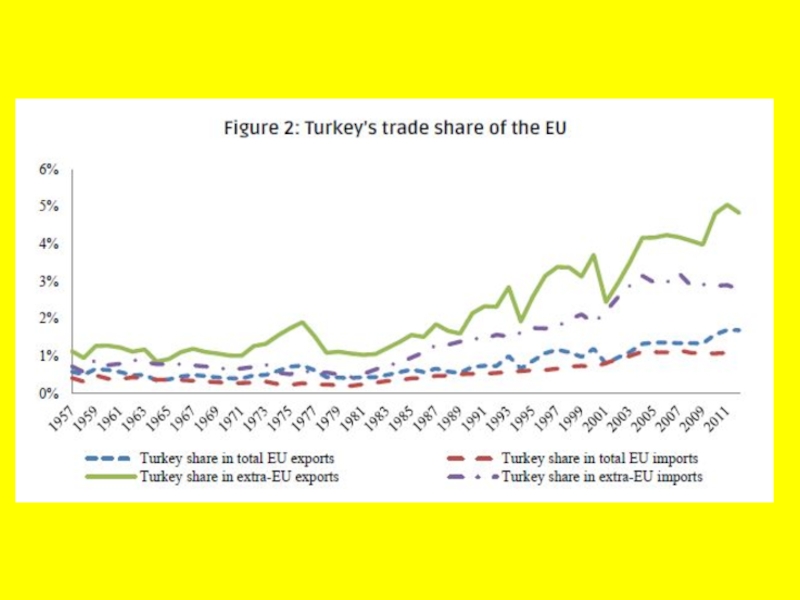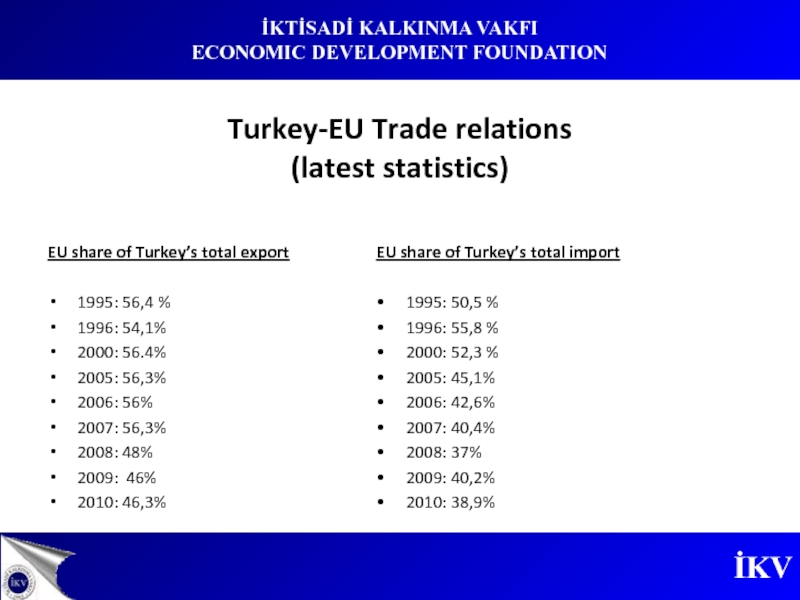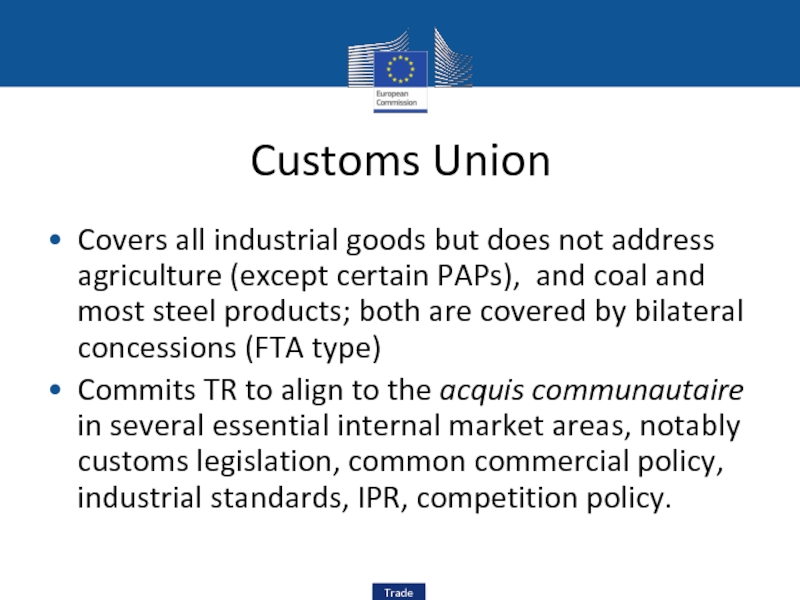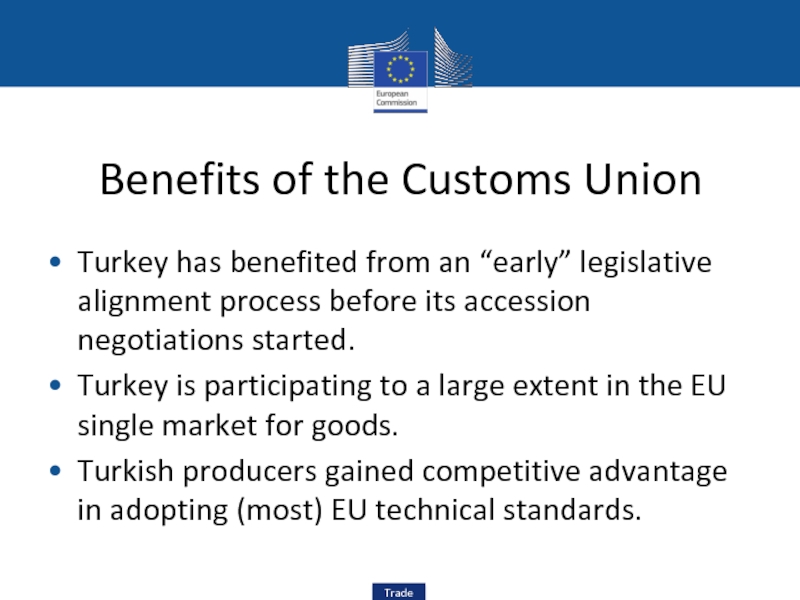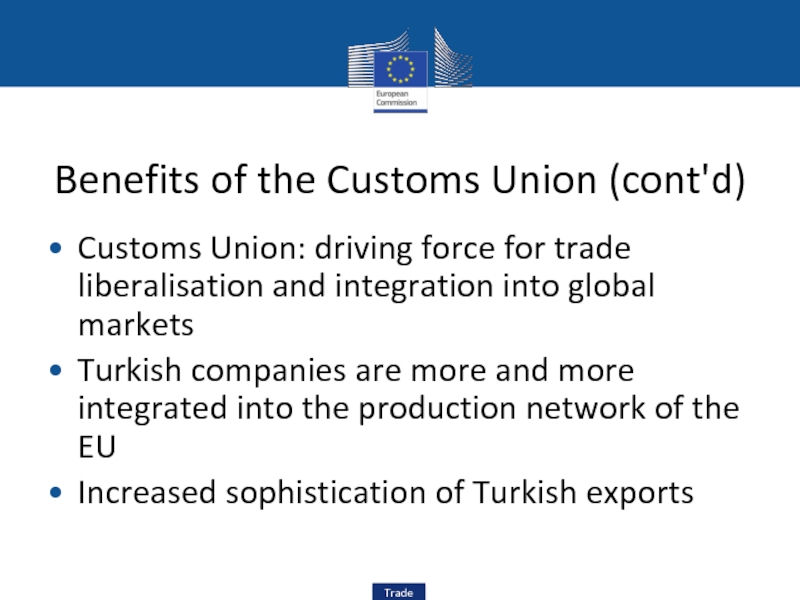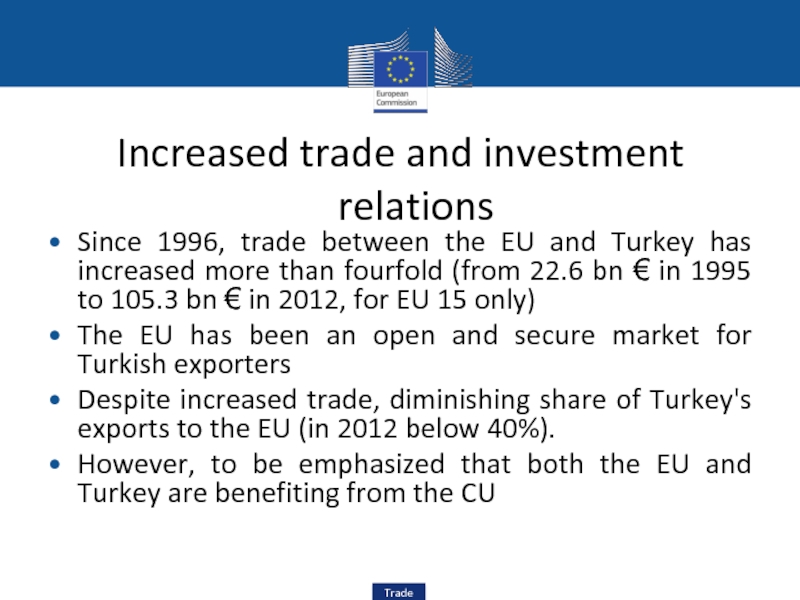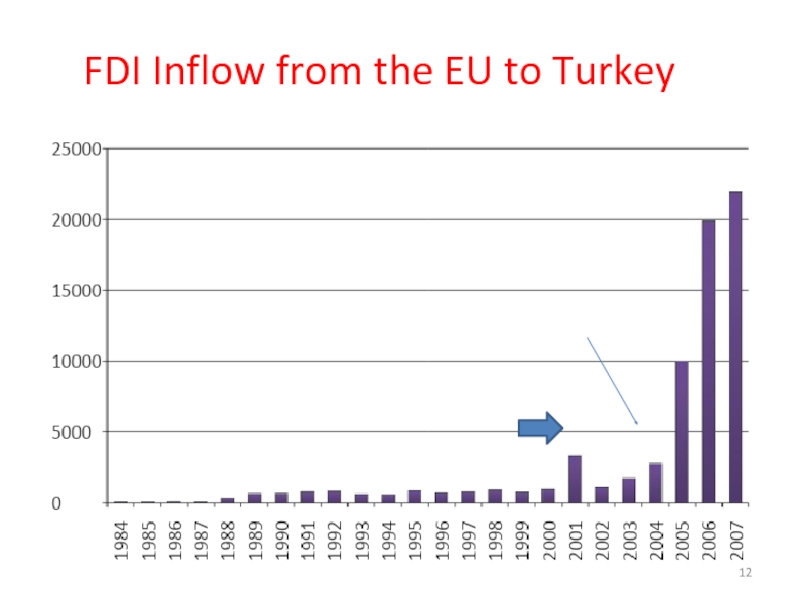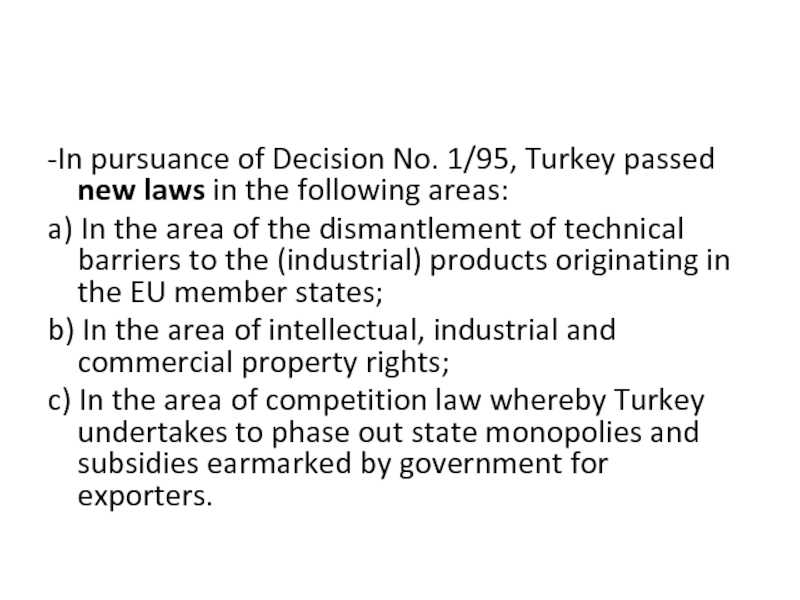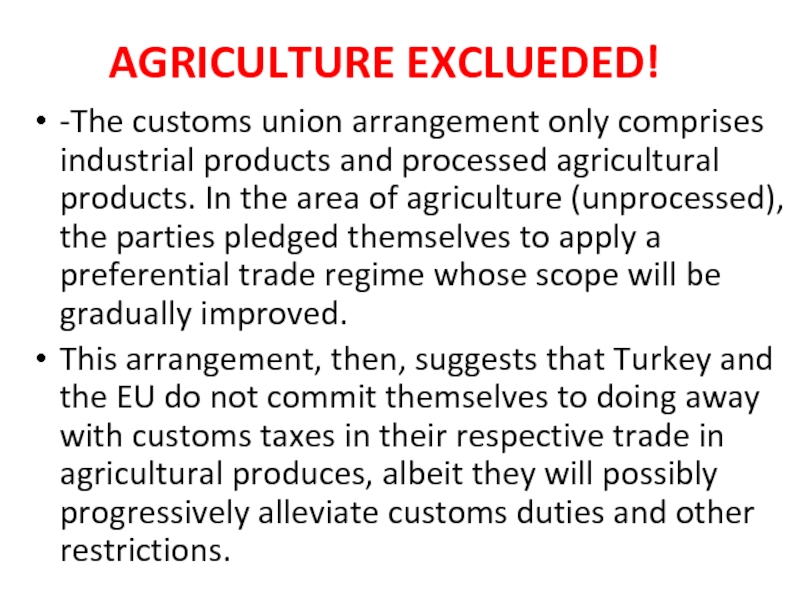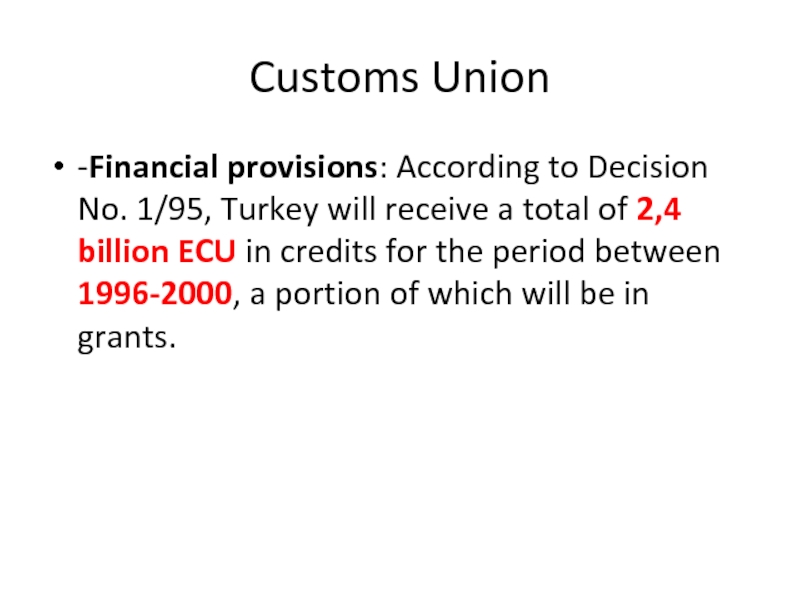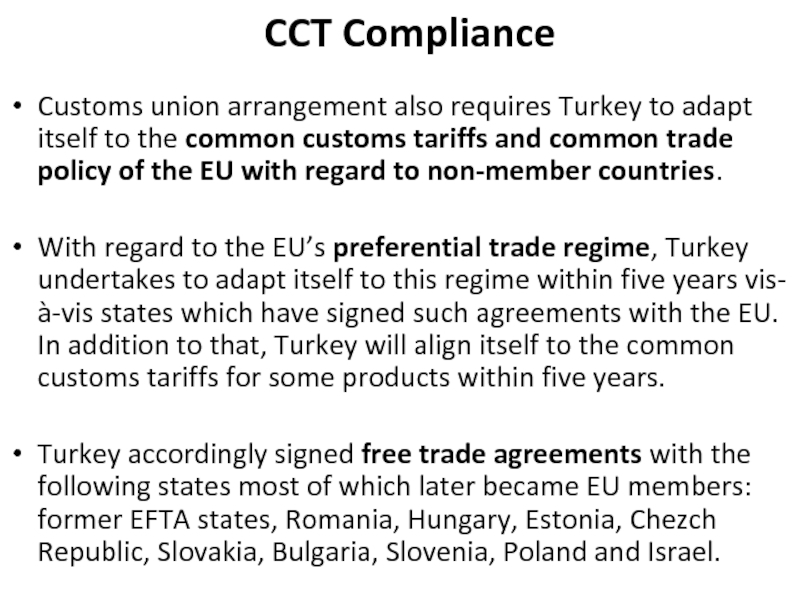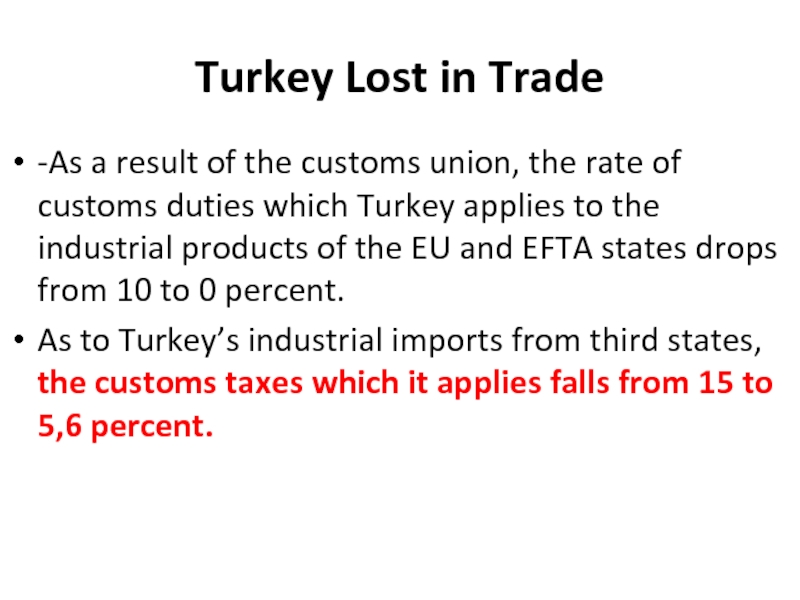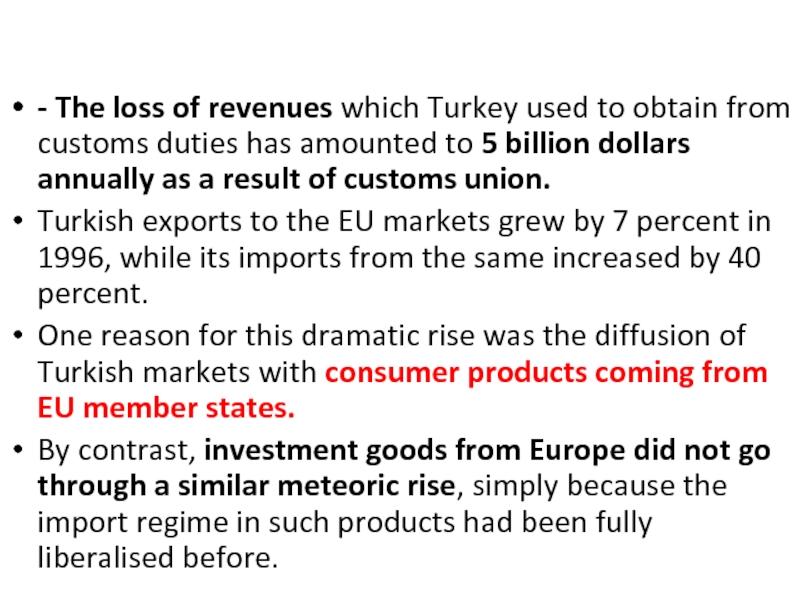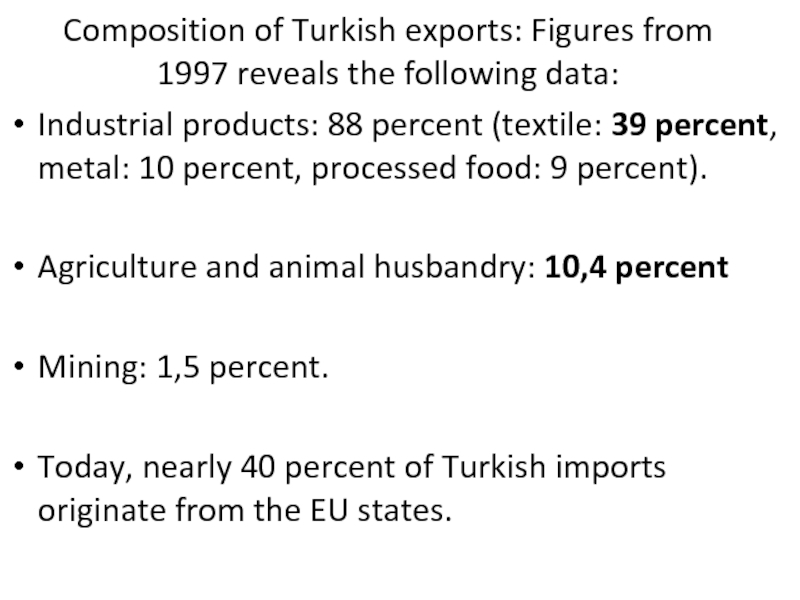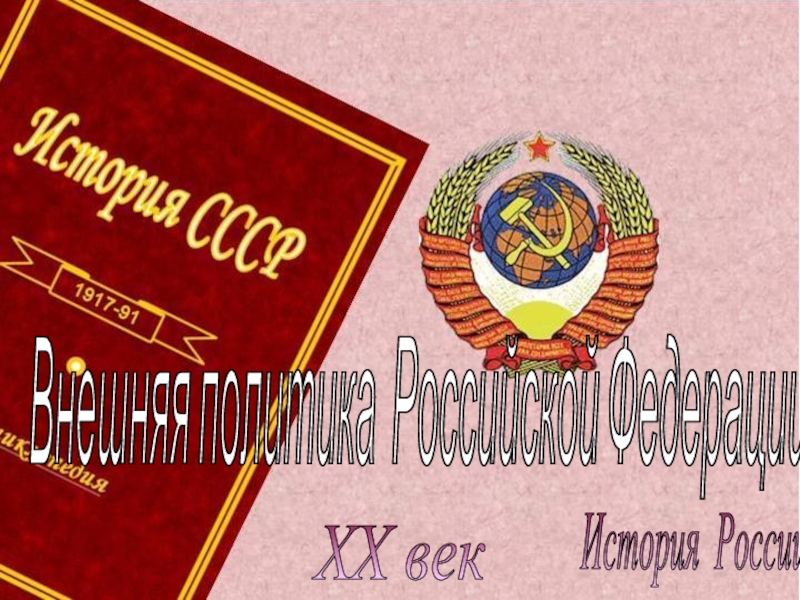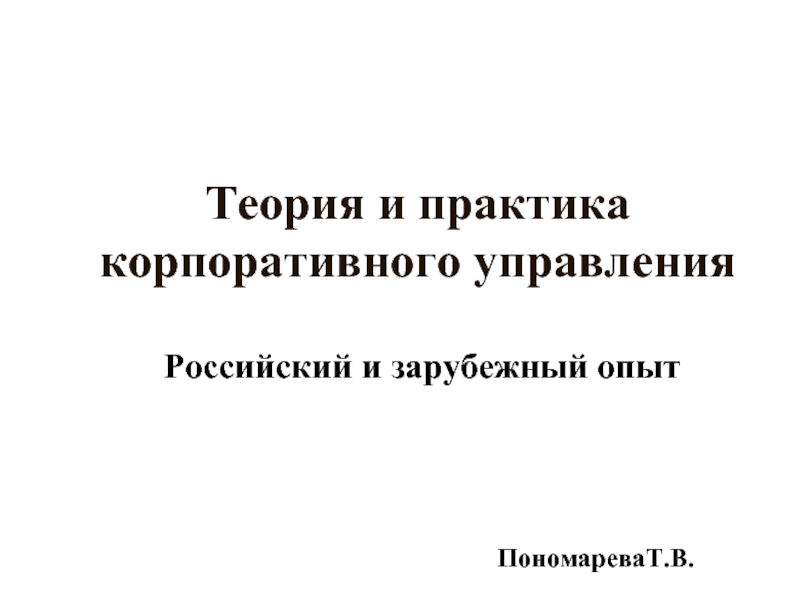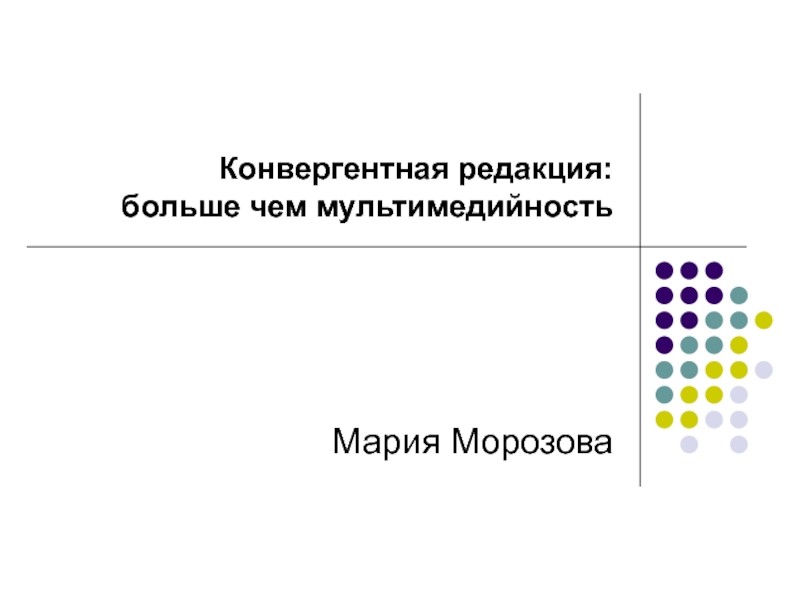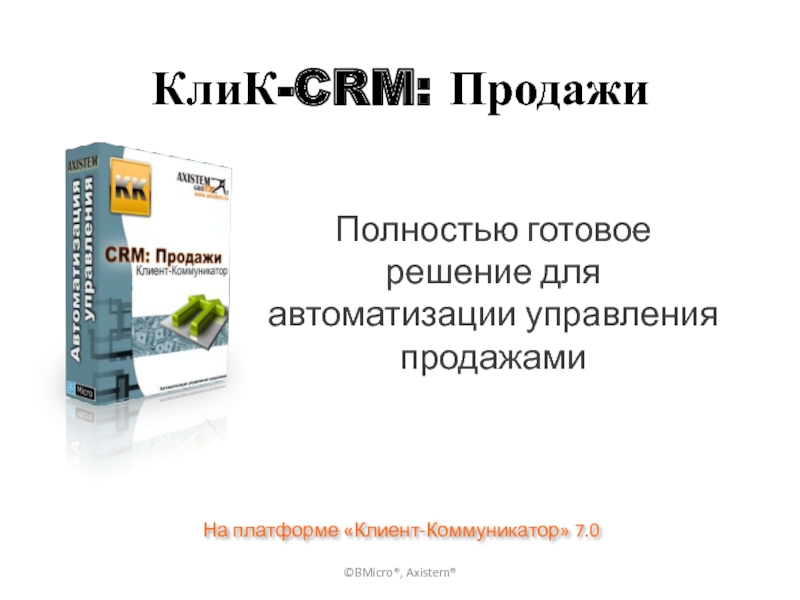- Главная
- Разное
- Дизайн
- Бизнес и предпринимательство
- Аналитика
- Образование
- Развлечения
- Красота и здоровье
- Финансы
- Государство
- Путешествия
- Спорт
- Недвижимость
- Армия
- Графика
- Культурология
- Еда и кулинария
- Лингвистика
- Английский язык
- Астрономия
- Алгебра
- Биология
- География
- Детские презентации
- Информатика
- История
- Литература
- Маркетинг
- Математика
- Медицина
- Менеджмент
- Музыка
- МХК
- Немецкий язык
- ОБЖ
- Обществознание
- Окружающий мир
- Педагогика
- Русский язык
- Технология
- Физика
- Философия
- Химия
- Шаблоны, картинки для презентаций
- Экология
- Экономика
- Юриспруденция
Customs union and its aftermath. INT 426 презентация
Содержание
- 1. Customs union and its aftermath. INT 426
- 2. ASSOCIATION COUNCIL DECISION OF 6 MARCH
- 3. Turkey dismantled all customs taxes and
- 4. -This decision provides for an effective
- 7. Turkey-EU Trade relations (latest
- 8. Customs Union Covers all industrial goods but
- 9. Benefits of the Customs Union Turkey has
- 10. Benefits of the Customs Union (cont'd) Customs
- 11. Increased trade and investment relations Since 1996,
- 12. FDI Inflow from the EU to Turkey
- 13. -In pursuance of Decision No. 1/95,
- 14. AGRICULTURE EXCLUEDED! -The customs union arrangement only
- 15. Customs Union -Financial provisions: According to Decision
- 16. CCT Compliance Customs union arrangement also requires
- 17. Turkey Lost in Trade -As a result
- 18. - The loss of revenues which
- 19. The annual trade deficit which Turkey has
- 20. Composition of Turkish exports: Figures from 1997
Слайд 2 ASSOCIATION COUNCIL DECISION OF 6 MARCH 1995 CONCERNING THE COMPLETION OF
The decision No. 1/95 of 6 March 1995 enters into force on 1 January 1996. The onset of customs union underlines the transition to the Final Stage in the relations between Turkey and the EU.
-Decision No. 1/95 consists of 64 articles, 16 explanations and 10 annexes. A common organ named Customs Union Joint Committee is set up to resolve disputes arising out of the implementation of the customs union so as to ensure the smooth functioning of the customs arrangement.
Слайд 3
Turkey dismantled all customs taxes and quantitative restrictions regarding the industrial
Likewise, with some exceptions, Turkey began to apply the common customs tariffs as set by the EU vis-à-vis third states.
Слайд 4
-This decision provides for an effective cooperation in the following areas:
-Turkey will also adapt itself to the EU law in the areas of intellectual, industrial and commercial property rights.
-Similarly Turkey will try to gradually establish harmonization with the EU policies in regard to consumer protection and competition.
-The parties are barred from using domestic taxation so as to discriminate against the other party. They will likewise refrain from using tax rebates accorded to domestic businessmen as a way of subsidising exports to the EU markets
Слайд 7
Turkey-EU Trade relations
(latest statistics)
EU share of Turkey’s total export
1995: 56,4 %
1996:
2000: 56.4%
2005: 56,3%
2006: 56%
2007: 56,3%
2008: 48%
2009: 46%
2010: 46,3%
İKTİSADİ KALKINMA VAKFI
ECONOMIC DEVELOPMENT FOUNDATION
İKV
EU share of Turkey’s total import
1995: 50,5 %
1996: 55,8 %
2000: 52,3 %
2005: 45,1%
2006: 42,6%
2007: 40,4%
2008: 37%
2009: 40,2%
2010: 38,9%
Слайд 8Customs Union
Covers all industrial goods but does not address agriculture (except
Commits TR to align to the acquis communautaire in several essential internal market areas, notably customs legislation, common commercial policy, industrial standards, IPR, competition policy.
Слайд 9Benefits of the Customs Union
Turkey has benefited from an “early” legislative
Turkey is participating to a large extent in the EU single market for goods.
Turkish producers gained competitive advantage in adopting (most) EU technical standards.
Слайд 10Benefits of the Customs Union (cont'd)
Customs Union: driving force for trade
Turkish companies are more and more integrated into the production network of the EU
Increased sophistication of Turkish exports
Слайд 11Increased trade and investment relations
Since 1996, trade between the EU and
The EU has been an open and secure market for Turkish exporters
Despite increased trade, diminishing share of Turkey's exports to the EU (in 2012 below 40%).
However, to be emphasized that both the EU and Turkey are benefiting from the CU
Слайд 13
-In pursuance of Decision No. 1/95, Turkey passed new laws in
a) In the area of the dismantlement of technical barriers to the (industrial) products originating in the EU member states;
b) In the area of intellectual, industrial and commercial property rights;
c) In the area of competition law whereby Turkey undertakes to phase out state monopolies and subsidies earmarked by government for exporters.
Слайд 14AGRICULTURE EXCLUEDED!
-The customs union arrangement only comprises industrial products and processed
This arrangement, then, suggests that Turkey and the EU do not commit themselves to doing away with customs taxes in their respective trade in agricultural produces, albeit they will possibly progressively alleviate customs duties and other restrictions.
Слайд 15Customs Union
-Financial provisions: According to Decision No. 1/95, Turkey will receive
Слайд 16CCT Compliance
Customs union arrangement also requires Turkey to adapt itself to
With regard to the EU’s preferential trade regime, Turkey undertakes to adapt itself to this regime within five years vis-à-vis states which have signed such agreements with the EU. In addition to that, Turkey will align itself to the common customs tariffs for some products within five years.
Turkey accordingly signed free trade agreements with the following states most of which later became EU members: former EFTA states, Romania, Hungary, Estonia, Chezch Republic, Slovakia, Bulgaria, Slovenia, Poland and Israel.
Слайд 17Turkey Lost in Trade
-As a result of the customs union, the
As to Turkey’s industrial imports from third states, the customs taxes which it applies falls from 15 to 5,6 percent.
Слайд 18
- The loss of revenues which Turkey used to obtain from
Turkish exports to the EU markets grew by 7 percent in 1996, while its imports from the same increased by 40 percent.
One reason for this dramatic rise was the diffusion of Turkish markets with consumer products coming from EU member states.
By contrast, investment goods from Europe did not go through a similar meteoric rise, simply because the import regime in such products had been fully liberalised before.
Слайд 19The annual trade deficit which Turkey has suffered in its trade
1995: 5,8 billion dollars. (Before customs union)
1996: 11,6 __________
1997: 12,6 __________
1998: 10,6_________
1999: 7____________
2000: 12,1__________
2001: 2,15__________
2006: 10____________
2007: 8,2____________
Слайд 20Composition of Turkish exports: Figures from 1997 reveals the following data:
Industrial
Agriculture and animal husbandry: 10,4 percent
Mining: 1,5 percent.
Today, nearly 40 percent of Turkish imports originate from the EU states.
